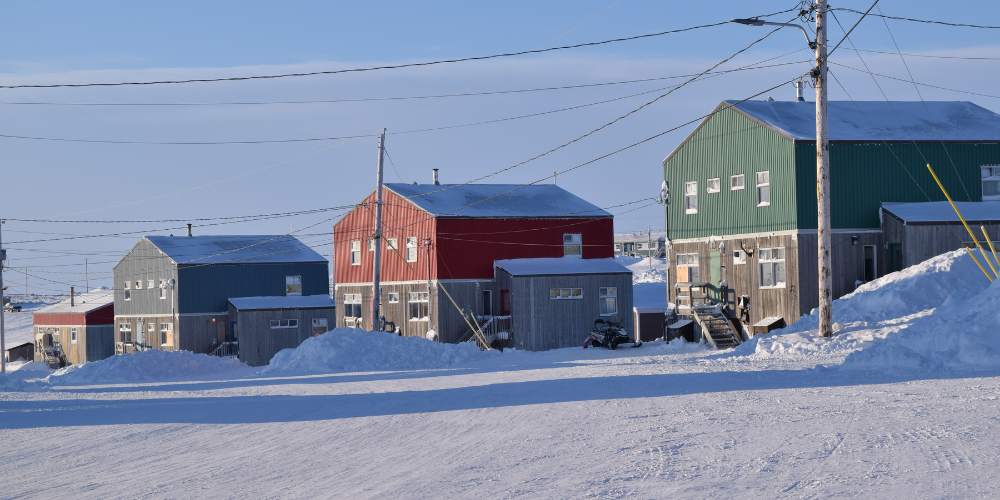
Canadian Planning Lessons for South Australia
How are Canadian Planners Dealing with Issues Relevant to South Australia?
CPD’s Principal Planner Dylan Furnell was lucky enough to attend the Canadian Institute of Planners ‘National Congress’ held in Edmonton, Alberta in July. The 3 day event touched on all facets of planning in Canada and was an insight into the way Canadians are dealing with key planning issues, many of which are just as relevant to South Australians. Here is a small selection of some of the key takeaways throughout the program which could be key to improving outcomes within planning and development in South Australia.

Decolonisation of Planning Processes
Both Canada and Australia have long histories of colonisation at the expense of indigenous populations who have been heavily impacted by these events. Current planning procedures still undervalue the insight and values of indigenous people today in both countries. Canada is making strides towards inclusion of local indigenous knowledge and values into larger planning projects. This is commonly through incorporating them into consultation processes early in strategic and policy projects.
Going a step further, Canada has a growing number of 100% indigenous owned and operated planning firms who are providing pathways for young indigenous people to pursue a successful career in planning. As there is many areas of Canada which are fully controlled by the local indigenous community these firms are also able to assist indigenous communities plan for the future. This is through the creation of plans and policies for control of land uses in their local community. Although Canada still has much work to do, Australia is even further behind and need to start prioritising local indigenous knowledge and values as soon as possible.
Planning for Immigration and Demographic Shifts
Both Canada and Australia feature similar issues when it comes to demographic changes and immigration. Both populations are rapidly aging, with birth rates reducing just as quickly. As such the governments in both countries are increasing immigration to bring younger, skilled workers into the country to fuel the economy as the older generations head into retirement. As we all know, this is contributing to pressures around construction of new housing and current shortfalls are leading to a lack of affordability across major cities and the regions.
Canadian cities such as Vancouver are exploring relaxation of maximum dwelling units, building height limits and parking requirements to allow for greater density housing to increase the supply of affordable housing. This is particularly prominent within the inner urban areas and along transport routes to ensure that higher density locality and areas close to the city centres are able to provide quality housing which is well connected.
Tiny Homes as a Tool for Homelessness
Homelessness is an issue plaguing any major urban region of both Canada and Australia. To address this Canada has a number of projects for tiny home based solutions which seek to provide functional housing as a transitional measure. These projects construct the tiny homes and other facilities to create a small community where not only housing is provided but life skills can be taught, drug and alcohol programs can be initiated and education can be delivered so the occupant can grow and transition out of the transitional housing.
These projects go above and beyond traditional emergency accomodation and provide an opportunity to get back on track for many within the homeless community. Australian cities should look to monitor the outcomes of this relatively new model and implement similarly if proven successful. Thinking outside of the box is critical.
Housing in Remote Communities
Similarly to Australia, Canada features some of the harshest environments in the world. Canada is undertaking an ambitious project currently to supply 3,000 new dwellings to some of the northern most reaches of the country within Nunavut. These communities feature very high populations of Inuit people who predominantly live in public housing. The current housing stock is aging and population numbers are growing. As such the project is providing additional housing stock and housing variety to better meet the needs of the community.
The logistical hurdles of this project are unfathomable for those who haven’t worked in these communities before. Most of these communities have no road access and shipping is only possible at the end of summer when sea ice is at its lowest point. Construction of these houses often takes two years, for a simple construction and is mostly prefabricated elsewhere before final assembly in Nunavut. Australia has harsh environments, but there are really no logistical excuses for high quality public housing in all areas of Australia when compared to the challenges in Nunavut. Read more about this project here.

Attending the Canadian conference was insightful and highly recommended for any planners seeking a unique learning experience and chance to see things from a relevant but slightly different lens. The Australian and Canadian Planning Systems are similar, but there are learnings which can be applied for Australian planners, particularly in improving processes and undertaking policy and strategic planning projects. Seeing things from another perspective can open up new ideas and encourage innovation which can often be lacking in South Australian Planning. Planning is an intrinsically progressive profession and planning departments and professionals need to continue to look for innovative solutions rather than being an obstruction to progress. I encourage all planners to follow the Canadian Institute of Planners.
To follow along and find out more about planning issues, hear client stories or learn more about the development process make sure to follow any of our social media channels to stay updated.





